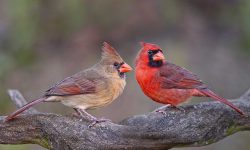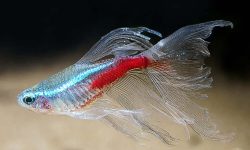Known for its vast plains and farming heritage, Nebraska is also a haven for birdwatchers. Hawks, in particular, soar as iconic predators in the state’s skies. They play a vital ecological role and draw the attention of researchers, photographers, and nature lovers. From the Sandhills to wooded river valleys, Nebraska offers rich habitats for a wide variety of hawk species.

The Geography and Climate of Nebraska: A Raptor’s Paradise
Nebraska’s varied landscape—from expansive grasslands and wetlands to river systems and woodland corridors—creates an exceptional environment for hawks to thrive. These diverse habitats support nesting, hunting, and migration, making the state an ideal stopover and breeding ground for raptors.
Major rivers like the Platte, Missouri, and Niobrara serve as vital migratory pathways. Nebraska’s central geographic location within North America places it directly in the path of many hawk species journeying between Canada and Central or South America.
The state’s continental climate features cold winters, hot summers, and consistent winds, which influence prey abundance and migration behavior. Seasonal weather variations create a dynamic ecosystem that continually attracts hawks and supports their life cycles year-round.
Nebraska’s elevation ranges from about 840 feet in the east to more than 5,000 feet in the panhandle, contributing to a range of microclimates. These elevation gradients affect vegetation and prey species, leading to pockets of hawk activity that vary across the state. In the Sandhills, expansive grasslands provide ideal nesting grounds for ground-nesting hawks like the Northern Harrier. Wetlands interspersed throughout these dunes attract amphibians, rodents, and insects that sustain the food web for raptors.
In eastern Nebraska, deciduous forests along river corridors support woodland species like Cooper’s Hawks and Sharp-shinned Hawks. The transition zones between forest and open space are particularly productive hunting grounds. Meanwhile, western Nebraska’s buttes and escarpments serve as excellent nesting areas for Ferruginous Hawks and Golden Eagles, which prefer remote, rugged terrain.
Nebraska’s climate also contributes to predictable prey cycles. Cyclical peaks in rodent populations often correlate with milder winters and abundant summer rainfall. These fluctuations affect hawk breeding success, migration timing, and distribution. The variety of weather conditions—from tornado-prone spring storms to snow-laden winters—also provides dynamic research opportunities for understanding hawk behavior under environmental stress.
These geographic and climatic features make Nebraska not just a temporary waystation but a year-round habitat for many hawk species. Their presence across such diverse environments underscores the ecological richness and avian importance of the state.
Migration Patterns and Timing
The spring and fall migrations are prime times for hawk watching in Nebraska. During these periods, tens of thousands of hawks, representing numerous species, pass through the state’s skies. The Central Flyway, one of the major North American migratory routes, cuts directly through Nebraska, making it a key corridor for raptor movement. This flyway is particularly active in April and October, drawing birdwatchers, ornithologists, and conservationists to strategic observation points such as the Hitchcock Nature Center, Fontenelle Forest, and the Wildcat Hills.
The diversity of species observed during migration includes Broad-winged Hawks, Swainson’s Hawks, Red-tailed Hawks, and Sharp-shinned Hawks. Each species follows its own migratory schedule, with some traveling thousands of miles from Canada to Central and South America. Nebraska’s open skies, predictable thermals, and abundance of prey make it an ideal stopover location, allowing hawks to rest, refuel, and gain energy for the journey ahead.
One of the most remarkable aspects of hawk migration in Nebraska is the phenomenon of “kettling,” where large groups of hawks spiral upward together on rising columns of warm air called thermals. These kettles can contain hundreds of birds and are a thrilling sight for birdwatchers. Observation events are often organized during peak weeks to document and celebrate this natural occurrence, often with volunteers participating in citizen science initiatives.
For researchers, migration periods are critical for gathering long-term data. Hawk migration counts, banding programs, and satellite tracking projects are conducted to monitor population health, migration timing, and changes in distribution. These scientific efforts are essential for identifying trends such as climate-related shifts in migration timing or population declines that may require conservation action.
Moreover, educational institutions and wildlife organizations often use migration seasons as outreach opportunities, offering workshops, guided tours, and classroom programs to foster public interest in raptor conservation. This intersection of science, education, and recreation helps reinforce Nebraska’s role as a pivotal state in the conservation of North American raptors.
Prime Hawk Watching Locations in Nebraska

Nebraska boasts several excellent locations for observing hawks in their natural environment. The Sandhills region, with its mix of grasslands and wetlands, supports a variety of raptor species. Valentine National Wildlife Refuge and Crescent Lake National Wildlife Refuge are hotspots for hawk sightings, particularly during nesting season.
The Platte River Valley is another key area, offering not just hawks but also a wide array of other bird species. Rowe Sanctuary near Kearney is popular during spring migration. Ponca State Park, located in the northeastern part of the state, provides wooded bluffs and river vistas ideal for spotting both perched and soaring hawks.
Wildcat Hills State Recreation Area and Scotts Bluff National Monument in western Nebraska feature rugged terrain that appeals to Ferruginous Hawks and other cliff-nesting species. These areas are especially scenic and provide excellent opportunities for photography and nature education.
Numerous lesser-known sites across Nebraska offer fantastic hawk watching potential. Places such as Indian Cave State Park, Fort Niobrara National Wildlife Refuge, and the Rainwater Basin region attract a range of raptors depending on the season. Elevated overlooks, open grasslands, and riparian woodlands are scattered across these areas, giving birders ample opportunities to observe hawks in action.
Local hawk watching groups and nature centers publish annual birding calendars that highlight peak times for visiting each site. These resources help enthusiasts plan trips to coincide with active migration windows. For remote viewing, live-streaming bird cams at Audubon’s Rowe Sanctuary allow virtual access to hawk behavior.
Ultimately, Nebraska’s wide array of accessible and ecologically diverse birding locations makes it a premier destination for raptor enthusiasts. Whether observing a solitary Red-tailed Hawk scanning the prairie or watching a kettle of Broad-winged Hawks rise on thermals, visitors will find unforgettable encounters in every region of the state.
The Role of Hawks in Nebraska’s Ecosystem
Hawks play a vital role in maintaining ecological balance by controlling populations of rodents and small mammals. Their predation prevents overpopulation of species like voles, mice, and rabbits, which can otherwise cause damage to crops and vegetation. By naturally regulating these populations, hawks reduce the need for chemical pest control methods, benefiting both agriculture and environmental health.
Beyond pest control, hawks contribute to biodiversity by influencing the behavior and distribution of prey. Their presence shapes the food web, affecting how and where prey animals forage, nest, and interact. This cascade of interactions helps maintain healthy ecosystems.
Hawks also serve as bioindicators. Their health, abundance, and reproductive success reflect the environment’s overall state. A stable or growing hawk population usually signals a thriving ecosystem. Conversely, a decline may point to degradation caused by habitat loss, pesticide use, or pollution.
In Nebraska, researchers monitor hawk populations to detect early signs of ecological issues. Conservation programs protect nesting and hunting grounds. Educational outreach promotes coexistence and stewardship among local communities, especially in agricultural regions.
Hawks in Nebraska are more than sky hunters—they are essential to the state’s ecological network and guardians of environmental health.
Conservation Efforts and Challenges
Conservation organizations and state agencies in Nebraska have recognized the importance of protecting hawk populations and their habitats. Efforts include restoring native prairie ecosystems, safeguarding wetlands, and creating raptor-friendly landscapes. Statewide programs aim to reduce pesticide use and minimize threats from development.
Key challenges hawks face include habitat fragmentation from expanding agriculture, urban sprawl, and infrastructure growth. Large-scale farming often replaces native vegetation, reducing prey and shelter. Urban expansion disrupts nesting sites and increases human-related risks.
Renewable energy infrastructure, especially wind farms, poses another challenge. Poorly planned turbine placement can interfere with migration routes and cause bird collisions. Power lines and highways contribute to mortality through electrocution and vehicle impacts.
Addressing these challenges requires collaboration among conservationists, landowners, energy companies, and policymakers. Best practices such as turbine siting and power line marking help reduce harm. Land conservation easements and incentive programs encourage habitat protection on private lands.
Public education is vital. School programs, nature centers, and citizen science projects involve Nebraskans in hawk conservation. Events, festivals, and community monitoring raise awareness and build grassroots support.
Technology plays a growing role. Satellite telemetry, remote cameras, and GIS tools monitor hawk behavior and guide conservation decisions.
While challenges remain, Nebraska’s proactive approach sets an example. Continued research, engagement, and policy support will ensure hawks continue to soar in the state’s skies.
Birdwatching Culture in Nebraska
Nebraska’s diverse hawk species have fostered a vibrant birdwatching culture. Events like the annual Nebraska Birding Bowl and Audubon Society bird counts attract enthusiasts from across the U.S., supporting community science and conservation.
Birdwatching clubs and forums allow sharing of sightings, photos, and tips. Hawk-watching groups organize seasonal outings, offering chances for communal learning and appreciation.
Educational campaigns promote bird-friendly practices, such as installing nest boxes, reducing window collisions, and maintaining native vegetation. Schools and libraries often host programs introducing young Nebraskans to raptors and birdwatching.
Additionally, bird tourism supports local economies. Visitors contribute to rural areas through lodging, dining, and guided tours, creating incentives to preserve natural habitats.
Through outreach, education, and recreation, Nebraska’s birdwatching community continues to grow, reinforcing the state’s reputation as a hawk hotspot and conservation leader.
Photography and Artistic Inspiration
Hawks are a favorite subject for wildlife photographers and artists due to their impressive size, powerful flight, and intense gaze. Nebraska’s open landscapes and dramatic skies offer a perfect backdrop for capturing stunning raptor images. Many photographers travel to the state specifically for hawk photography, contributing to eco-tourism and local economies.
Artists find inspiration in the form and symbolism of hawks, often incorporating them into paintings, sculptures, and crafts. These artistic expressions reflect the deep cultural and aesthetic value that hawks hold in the region.
Educational and Research Opportunities
Nebraska is home to a robust academic and scientific community that actively contributes to the study and conservation of hawks. Universities such as the University of Nebraska–Lincoln and Creighton University offer specialized courses in wildlife biology, ornithology, and ecology, providing students with a strong foundation in avian science. These institutions often partner with state wildlife agencies and non-profit organizations to create hands-on research opportunities that go beyond the classroom.
Fieldwork is a cornerstone of raptor education in Nebraska. Undergraduate and graduate students frequently engage in field studies involving nest monitoring, prey surveys, and habitat assessment. Some programs include summer internships or research assistantships that place students in national wildlife refuges, state parks, or nature preserves. These real-world experiences allow budding biologists to develop essential skills while contributing valuable data to ongoing hawk monitoring efforts.
A key area of research in Nebraska focuses on migration tracking. Using tools such as GPS satellite telemetry and geolocators, scientists follow the long-distance journeys of hawks to better understand their behavior, survival rates, and threats along migratory corridors. This data is instrumental in forming conservation strategies that are grounded in evidence and tailored to species-specific needs.
Environmental impact studies are also an important aspect of hawk research. Scientists assess how land use changes—such as urban development, agriculture, and renewable energy installations—affect raptor populations. Research findings are often shared with policymakers and land managers to guide sustainable development that minimizes disruption to hawk habitats.
Citizen science plays a supportive role in hawk research as well. Publicly accessible bird count programs and hawk-watching events help gather extensive data across large areas, which would be difficult for researchers to cover alone. These initiatives also strengthen public interest in conservation and help bridge the gap between science and community.
Nebraska’s commitment to avian research is further evidenced by conferences, seminars, and symposiums hosted throughout the year. These events allow scientists, educators, and conservationists to exchange knowledge, present findings, and discuss future directions in raptor ecology. Youth-focused programs, like junior birding camps and school science fairs, introduce future generations to the wonders of hawk biology and the importance of scientific inquiry.
In essence, Nebraska serves as both a classroom and a laboratory for raptor education. Its mix of academic expertise, diverse ecosystems, and collaborative conservation efforts creates a dynamic environment for learning and discovery. The state not only nurtures the next generation of wildlife professionals but also contributes meaningfully to the global understanding of hawk ecology.
Fun Facts About Hawks in Nebraska
Hawks are not only powerful predators but also fascinating creatures with remarkable adaptations and behaviors. In Nebraska’s diverse landscapes, they exhibit traits that captivate birdwatchers, researchers, and nature lovers alike. Here are some compelling and educational facts that highlight what makes hawks so unique in the Cornhusker State:
Hawks possess some of the sharpest eyesight in the animal kingdom—up to eight times more powerful than human vision. They can detect the slightest movement from hundreds of feet in the air. Some species, like the Red-tailed Hawk, can spot a small rodent in a field from over a mile away. Even more remarkably, many hawks can see ultraviolet light, which helps them track prey through urine trails invisible to humans.
Many hawk species in Nebraska, such as Swainson’s and Cooper’s Hawks, form lifelong mating pairs. These monogamous birds return to the same nesting territory year after year, often rebuilding and reusing their stick nests in tall trees or remote cliffs. These nesting habits strengthen pair bonds and ensure consistent reproductive success across generations.
Hawks are masters of the sky, capable of dazzling aerial maneuvers. During a hunting dive, a Sharp-shinned Hawk can reach speeds of over 100 miles per hour. With their broad wings, strong talons, and aerodynamic bodies, hawks are built for both endurance soaring and lightning-fast strikes. Their muscular legs and razor-sharp talons allow them to dispatch prey in seconds.
Nebraska’s spring skies often come alive with breathtaking courtship displays. Red-tailed Hawks are known for their sky dances—spiraling high into the air, locking talons with a mate, and tumbling together in midair. These acrobatic rituals not only establish pair bonds but also communicate territorial claims to rival hawks.
Juvenile hawks present another layer of fascination, as their plumage often looks completely different from adults. A young Red-tailed Hawk, for instance, lacks the species’ iconic red tail and instead sports streaked brown feathers. As the hawk matures, it molts into its adult coloration, a transformation that takes one to two years.
Ecologically, hawks are considered keystone species. Their role in regulating rodent, snake, and insect populations supports healthy biodiversity and helps prevent overgrazing and crop damage. A thriving hawk population often indicates a well-balanced and functioning ecosystem.
Hawks also hold cultural and symbolic value. Across Native American cultures on the Great Plains, hawks are revered as spiritual messengers and symbols of clarity and strength. Even today, their presence in the Nebraska sky evokes a sense of wild freedom and natural wisdom.
Interestingly, many hawks have adapted well to human environments. Red-tailed Hawks are now commonly spotted in cities like Lincoln and Omaha, using telephone poles, stadium lights, and tall buildings as urban perches. Their adaptability underscores their resilience in the face of habitat change.
These captivating facts reveal just how deeply embedded hawks are in Nebraska’s natural and cultural identity. From their powerful eyesight to their symbolic legacy, hawks continue to inspire curiosity, admiration, and conservation efforts throughout the state.
Conclusion
Nebraska’s reputation as a hawk hotspot is well-deserved. Its varied landscapes, strategic location, and commitment to conservation make it a haven for hawks and those who admire them. Whether you’re a seasoned ornithologist, a budding birdwatcher, or simply someone who appreciates the majesty of raptors, Nebraska offers a unique and rewarding experience. As awareness and appreciation grow, so too does the potential for safeguarding these magnificent birds for future generations. Hawks are not just visitors to Nebraska’s skies—they are an integral part of its natural heritage.






